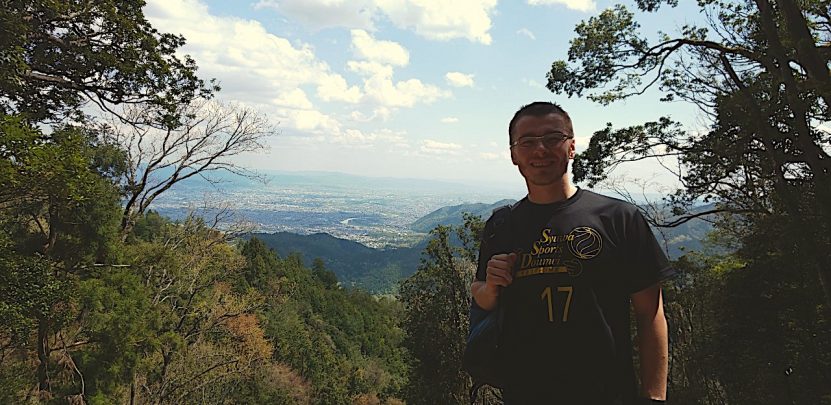
Alex on Mt Atago in Kyoto
News30 April 2020
"Lockdown" in Kyoto
Categorised under: Scholarships
Alex Thacker is one of the four Daiwa Scholars in Japanese Studies 2019. He is currently entering his second semester at Ritsumeikan University in Kyoto, Japan and below gives an insight into his current life in Kyoto.
Hello everybody. I hope that you’re all doing well, despite the current situation that we find ourselves all embroiled in! I thought that I’d share an update with you all in these somewhat challenging times, as currently in Japan the state of affairs concerning Coronavirus has resulted in (as of yet), around 13,500 total cases, and a limited interpretation of “lockdown” so to speak in the country. As such, I’ll share some information concerning the overall situation in Japan, and its background, then will follow with some more personal – “what have I been up to” type information.
Firstly, I’m sure one of the things that many people are wondering when they look at the Japanese Coronavirus situation is: Why hasn’t Japan completely locked down the country similar to many other Western countries? Well, although the answer to this is multi-faceted through there being various delegations of power on a prefecture by prefecture basis, it boils down to one simple answer: The government can’t.
On 7th April the Japanese government initially implemented a “state of emergency” for seven prefectures, with Tokyo included in this, but it was later extended to a nationwide level on the 16th of the same month. Despite the somewhat severe sounding nature of the measure, there wasn’t much actual power that PM Abe’s government could enforce over the citizenry, and he instead opted to “urge people to stay at home”, and to suggest that businesses voluntarily close their doors early. This saw marked success in many establishments in the Tokyo area, with many of the bars and such closing at 8pm, upon the local government’s request. Despite both these measures, as well as massively limiting most inbound flights to Japan, however, there has been a steady increase in Coronavirus cases on a nationwide level, leading to some scepticism concerning the effectiveness of the government’s response to COVID-19.
This chart – taken from covid19japan.com – a regularly updated source of Coronavirus cases in Japan does show that although the country has not yet reached the extreme levels of infections seen in the West, there has been a significant increase in cases – even since the state of emergency being declared nationwide from 16th April. In this chart the top orange coloured line shows confirmed cases, red indicates “Active” infections, and the blue and black show recovered and deceased figures respectively. However, as with any chart, there are many interpretations to figures, and there are also silver linings to any clouds, so to speak.
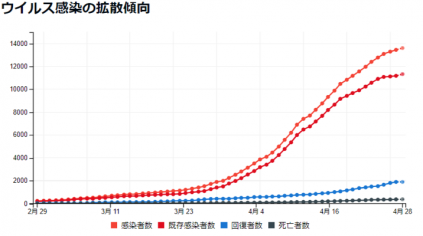
This next graph taken from the same source as above shows that the seven-day average level of infections are gradually falling – with the 28th April seeing about a third of the level of infections compared to the 18th, for instance. As such, although many mainstream media sources are rather bleak concerning reporting of COVID-19 – especially with criticisms aimed towards the Japanese government – I feel positive concerning the direction that Japan is heading. Of course, that doesn’t mean that there is not a need now more than ever to remain vigilant, but seeing the country slowly work together to overcome the pandemic is something that is quite positive, albeit with a somewhat delayed government reaction.

On a personal level, Ritsumeikan University closed all their campuses from the initial state of emergency declaration on 7 April, including their online classes. This took me somewhat by surprise as I was looking forward to resuming my studies after a somewhat long winter break, but, regardless, it has been a nice period of time to be able to focus on certain research that I can conduct independently, as well as other hobbies that have become easier to carry out in a somewhat isolated climate!
Concerning the research side of things, I have begun actively dissecting information from the Japanese Ministry of the Environment concerning investment into other countries regarding both (prevention of) increasing maritime plastics, as well as deforestation in regions such as Laos and Indonesia in collaboration with reducing emissions from deforestation and forest degradation (UN-REDD+), which has proven really interesting. I am contextualising this within information extracted from the Joint Crediting Mechanism program that Japan launched back in 2013, which, in essence, is a carbon emissions reduction program that mutually benefits both participating countries (Japan+X). This has proved to be quite time consuming, but I am looking forward to further breaking down information from the JCM, particularly in the aforementioned Laos and Indonesia regions, both being credited for taking large undertakings in both carbon emissions reductions as well as reductions in deforestation and maritime plastics respectively!
Information below from the JCM website detailing Japan and their partnered country, as well as projects both completed and underway!
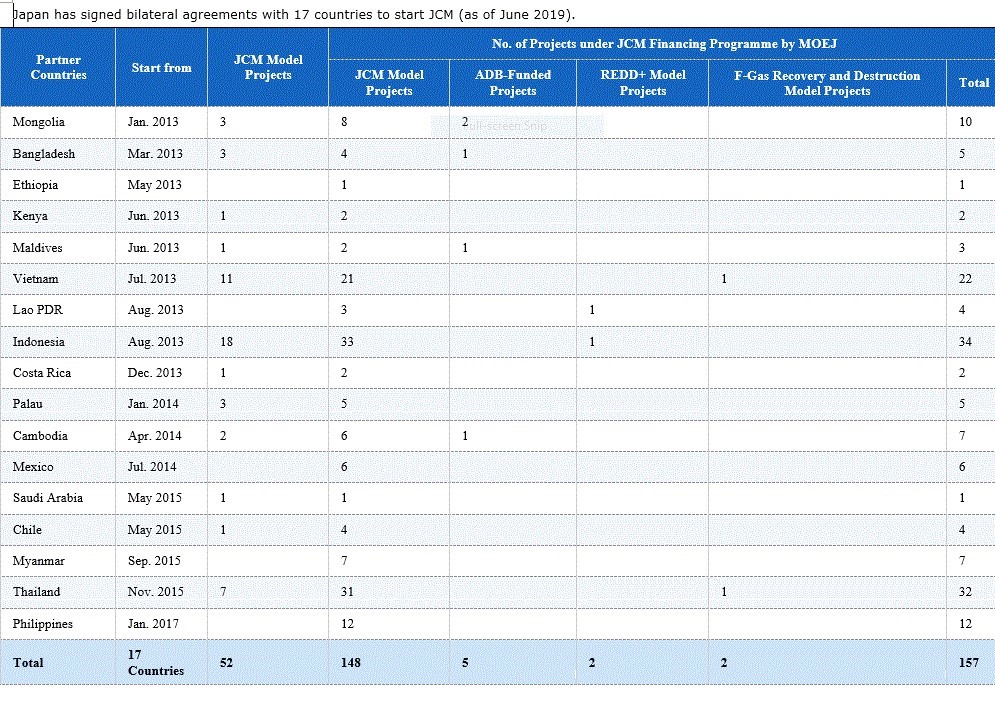
Finally, concerning hobbies, I have sadly found myself without a gym, due to them all now being closed indefinitely (a quandary I’m sure many others are facing) Consequently, I have thoroughly enjoyed being able to dedicate more time to reading, and have particularly enjoyed finally getting round to reading Minority Report by Philip K. Dick, The Handmaid’s Tale by Margaret Atwood, and also A Brief History of Time by Stephen Hawking! However, being somewhat active in nature, and not being satisfied by stay-at-home resistance band workouts, I’ve taken it upon myself to have a few outings a week to the local mountains of Kyoto, which has been incredibly enjoyable!
Of note, there have been three major areas that I’ve visited in the past two weeks! The first was Mt. Hiei – located on the North-eastern side of Kyoto, whose peak stands at 850 metres tall. Due to COVID-19 the botanical garden located at the summit was closed, but I’ll be sure to revisit again when it opens!

Secondly, I also visited Mt. Atago in northern Kyoto, which stands as the tallest mountain in the Kyoto region at 924 metres tall! Atago was a real challenge, consisting predominantly of stairs, with the ascent taking around 2 hours, but the view of Kyoto contrasts spectacularly with Hiei’s view from the different angle, in my opinion!
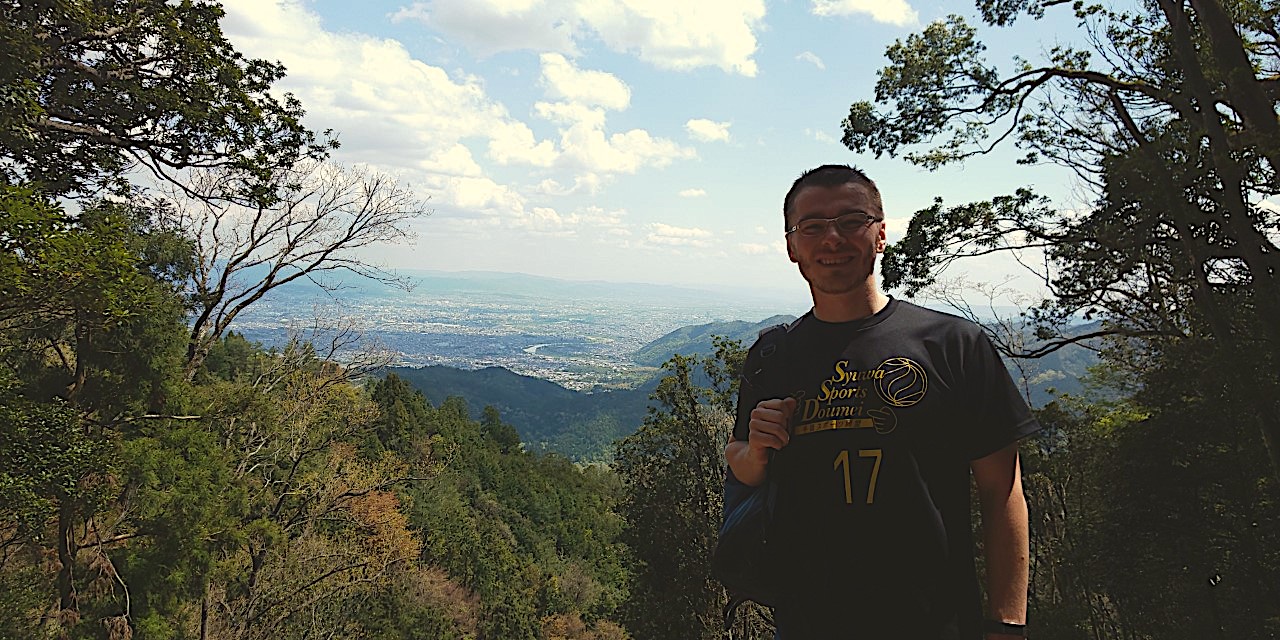
Finally, not so much a mountain but an area next to Mt Atago is Takao (which also has a mountain over near Tokyo), which has a lot of greenery, as well as rather ominous looking, towering trees, which I can be seen pictured between here.
I have covered most of the mountains in the Kyoto region, but fortunately the neighbouring Shiga and Southern Osaka regions both have plenty of mountains available to hike, so I am very much looking forward to the challenge of ascending the 1000 metre-plus mountains!
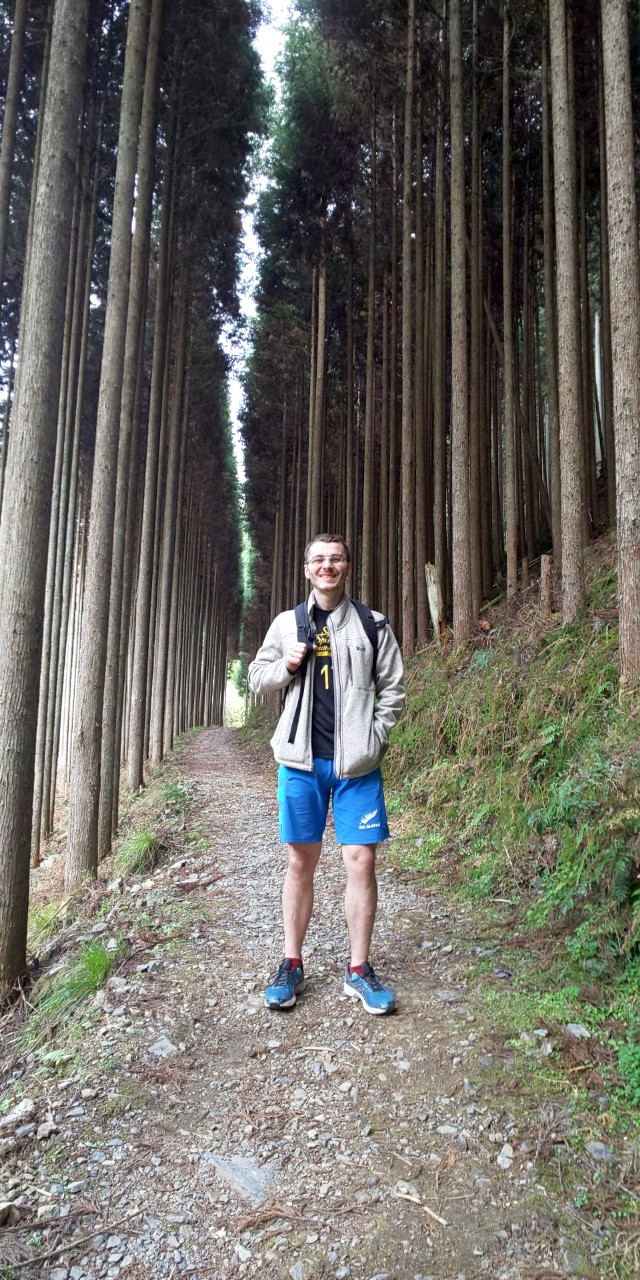
Although this was all very brief, that’s all from me for now! I hope that everybody continues to find themselves in good health and are able to spend as much time possible with their loved ones. I’m also looking forward to seeing you all when the current situation has settled down a bit!
Alex Thacker – An entry concerning “lockdown” in Kyoto, Japan. 28 April 2020